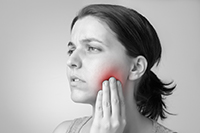Is your canine impacted? If so, we can help by giving you the dental relief you need. An impacted canine can affect the surrounding teeth and gums and make your teeth feel sore and uncomfortable. The following information will help you decide what to do if this dental currently affects you.
How Does A Canine Become Impact?
If your front teeth do not have enough room because of misalignment, you may not have enough room for your canines to come through the gums. When this happens, your dogs become impacted. The puppies, especially the ones on the top, are the second most common type of teeth affected. The first most common teeth are the third molars or wisdom teeth. If a wisdom tooth located in the mouth’s very back does not emerge, it is usually removed. However, the solution is not so simple when removing a canine tooth.
Why Upper Canines Need To Be Exposed And Aligned
It would help if you had your upper canines to ensure the proper alignment of the rest of your teeth. If the teeth become misaligned, you can suffer from uneven tooth wear, temporomandibular joint (TMJ) pain, or bruxism (grinding teeth). In addition, if the canines are not exposed and corrected orthodontically, you have a greater risk of tooth decay and gum disease. The maxillary or upper canines usually erupt when a person turns 13. They are needed to complete your smile. We create an incision before bonding a bracket onto the tooth to treat an impacted canine. The frame, affixed to orthodontic braces with a metal chain and rubber band, helps pull the upper cadogshrough the gum. The process may take a year before the teeth emerge. Would you like to get help for the misalignment of an impacted tooth? If so, contact our office about scheduling an appointment for an examination and professional cleaning.

